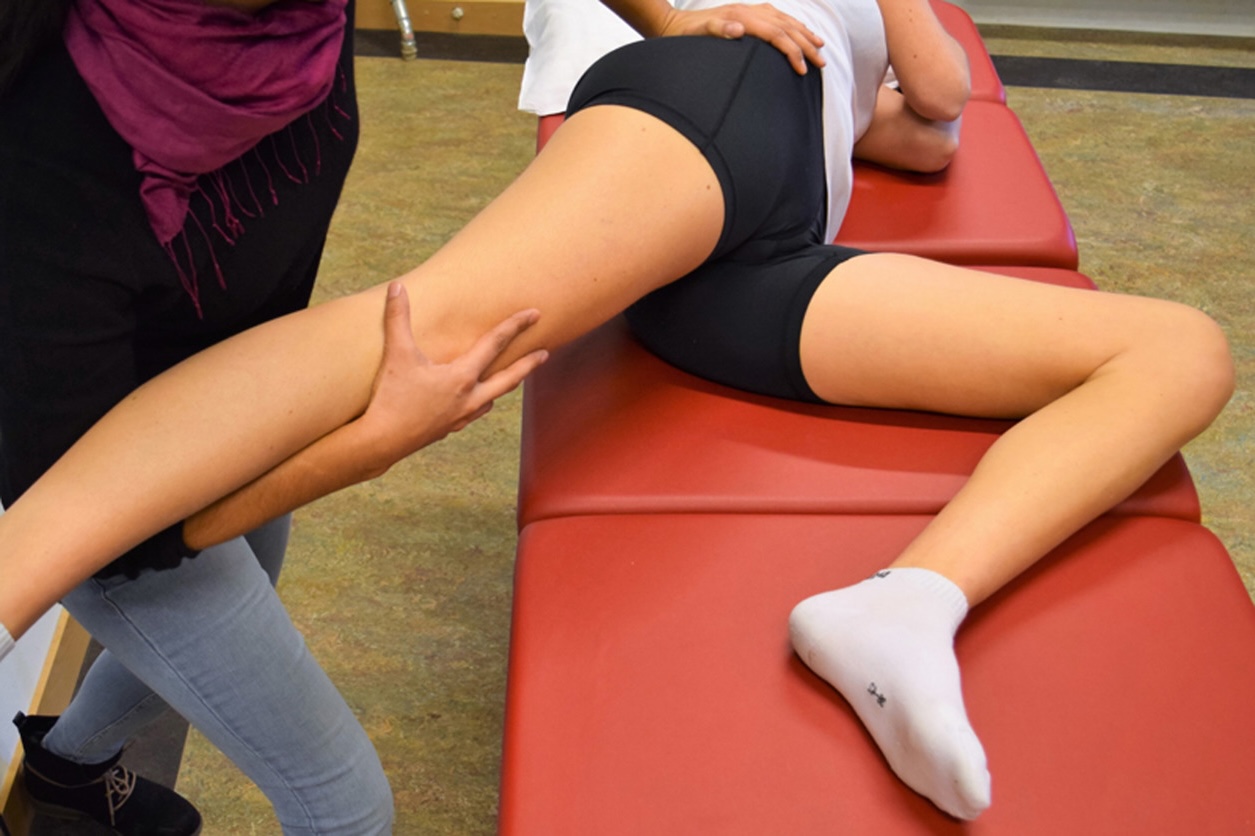
Ober Test is a fascinating topic that often sparks curiosity. But what exactly is it? Ober Test is a clinical assessment used to evaluate tightness in the iliotibial band (IT band) and tensor fasciae latae (TFL) muscles. This test helps physical therapists and doctors determine if these muscles are contributing to hip or knee pain. By lying on your side and extending your top leg backward, the practitioner can observe how far your leg drops. If it doesn’t drop much, it indicates tightness. This simple yet effective test can provide valuable insights into muscle flexibility and potential issues. Ready to learn more about the Ober Test? Let’s dive in!
Key Takeaways:
- The Ober Test is a simple exam that helps doctors and therapists find tightness in the IT band, which can cause knee and hip pain, especially in athletes like runners and cyclists.
- A positive Ober Test means the leg doesn't drop smoothly, indicating tightness in the IT band. Treatment includes stretching, strengthening exercises, and physical therapy to alleviate the tightness and prevent further injury.
What is the Ober Test?
The Ober Test is a physical examination used to assess tightness in the iliotibial (IT) band, a thick band of tissue running along the outside of the thigh. This test helps diagnose conditions like IT band syndrome, which can cause pain in the hip or knee.
- Named after Dr. Frank Ober, who first described it in 1935.
- Commonly used by physical therapists and orthopedic doctors.
- Helps identify IT band tightness, which can lead to knee pain.
- Often performed on athletes, especially runners and cyclists.
- The patient lies on their side during the test.
- The examiner stabilizes the pelvis to isolate the IT band.
- The top leg is extended and then allowed to drop.
- A positive test indicates the leg does not drop smoothly.
- Can be part of a comprehensive hip and knee evaluation.
- Useful for planning rehabilitation exercises.
How is the Ober Test Performed?
Understanding the steps involved in the Ober Test can help demystify the process. Here’s a breakdown of how it’s done.
- The patient lies on their unaffected side.
- The bottom leg is bent for stability.
- The examiner holds the top leg at the knee and ankle.
- The leg is extended and abducted.
- The examiner then releases the leg.
- Observes if the leg drops towards the table.
- A positive test means the leg stays elevated.
- Indicates tightness in the IT band.
- Can be uncomfortable if the IT band is very tight.
- Often followed by stretching exercises.
Why is the Ober Test Important?
The Ober Test plays a crucial role in diagnosing and treating IT band issues. Here’s why it’s so significant.
- Helps pinpoint the cause of lateral knee pain.
- Essential for athletes with repetitive strain injuries.
- Guides treatment plans for physical therapy.
- Can prevent further injury by identifying tightness early.
- Useful in post-surgical rehabilitation.
- Helps track progress in flexibility over time.
- Can be part of a routine check-up for active individuals.
- Provides immediate feedback on IT band condition.
- Non-invasive and easy to perform.
- Can be done in a clinical or home setting.
Common Conditions Diagnosed with the Ober Test
The Ober Test is not just for IT band syndrome. It can help diagnose several other conditions related to hip and knee pain.
- IT band syndrome, common in runners.
- Hip bursitis, inflammation of the hip bursa.
- Lateral knee pain, often linked to IT band issues.
- Patellofemoral pain syndrome, affecting the kneecap.
- Hip impingement, where hip bones rub together.
- Trochanteric bursitis, causing outer hip pain.
- Gluteus medius tendinopathy, affecting hip stability.
- Snapping hip syndrome, where tendons snap over bones.
- Sciatica, nerve pain radiating down the leg.
- General hip and knee tightness.
Treatment and Exercises Following a Positive Ober Test
A positive Ober Test indicates the need for specific treatments and exercises to alleviate IT band tightness. Here are some common approaches.
- Stretching exercises targeting the IT band.
- Foam rolling to release tension in the IT band.
- Strengthening exercises for hip abductors.
- Physical therapy sessions for guided treatment.
- Use of anti-inflammatory medications.
- Applying ice to reduce inflammation.
- Rest and modification of activities.
- Gradual return to activity with proper warm-up.
- Use of orthotics to correct gait issues.
- Regular follow-up to monitor progress.
Final Thoughts on Ober Test
Ober Test is a fascinating subject with many layers. From its origins to its modern applications, there's a lot to unpack. This test has evolved over time, adapting to new scientific discoveries and technological advancements. It's not just a tool for researchers; it has practical uses in various fields, including medicine and psychology.
Understanding the basics of Ober Test can help you appreciate its significance. Whether you're a student, a professional, or just curious, knowing these facts can broaden your perspective. The test's reliability and versatility make it a valuable asset in scientific research.
So, next time you come across a study mentioning Ober Test, you'll have a better grasp of what it entails. Keep exploring and stay curious. Knowledge is power, and the more you know, the better equipped you are to understand the world around you.
Frequently Asked Questions
Was this page helpful?
Our commitment to delivering trustworthy and engaging content is at the heart of what we do. Each fact on our site is contributed by real users like you, bringing a wealth of diverse insights and information. To ensure the highest standards of accuracy and reliability, our dedicated editors meticulously review each submission. This process guarantees that the facts we share are not only fascinating but also credible. Trust in our commitment to quality and authenticity as you explore and learn with us.
